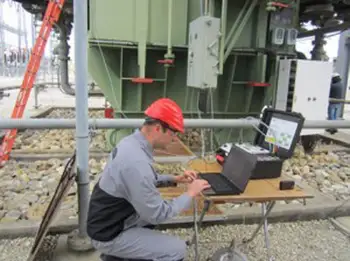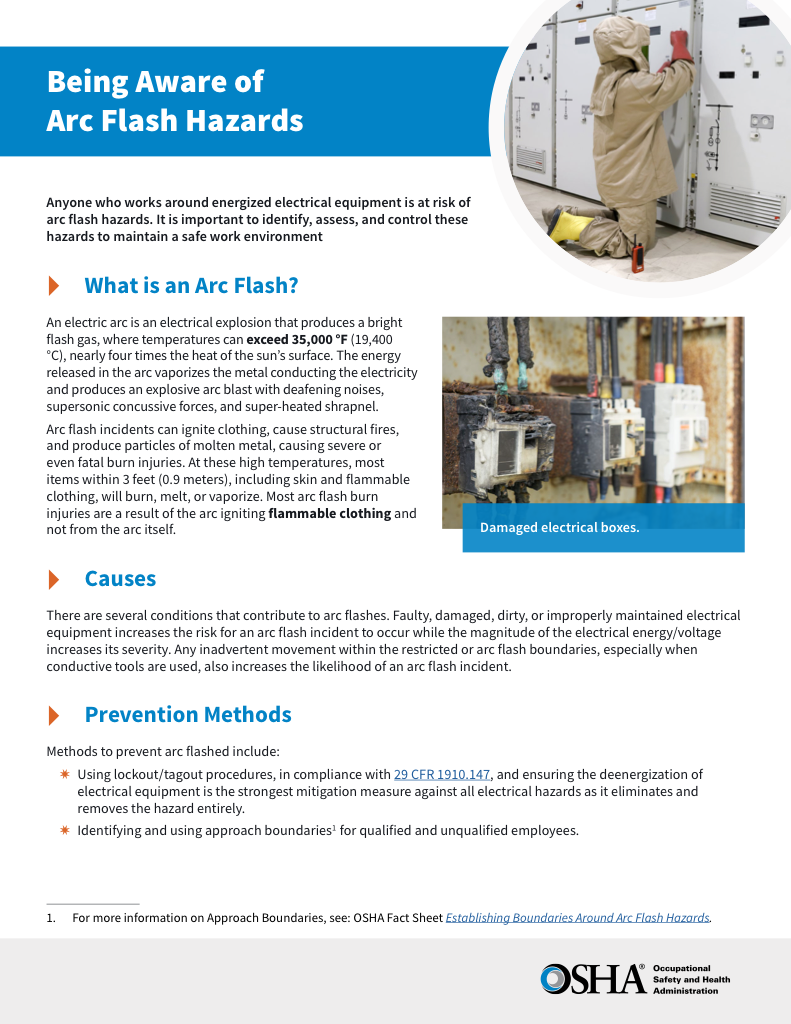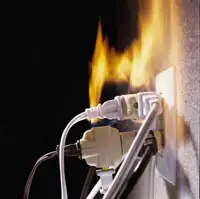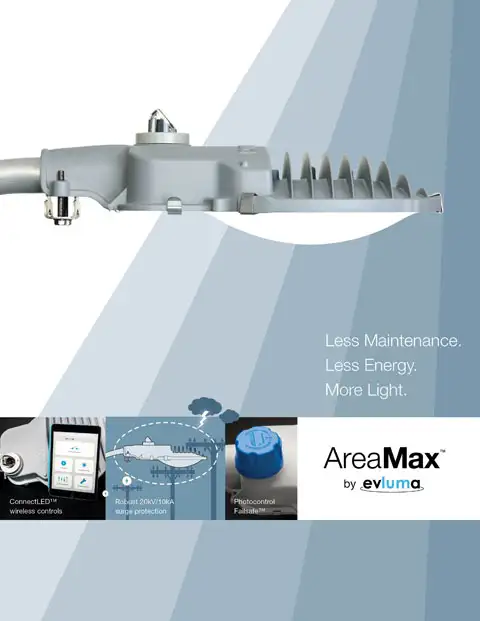Hydrogen Leak Detector Explained

Substation Maintenance Training
Our customized live online or in‑person group training can be delivered to your staff at your location.

- Live Online
- 12 hours Instructor-led
- Group Training Available
Download Our OSHA 4475 Fact Sheet – Being Aware of Arc Flash Hazards

- Identify root causes of arc flash incidents and contributing conditions
- Apply prevention strategies including LOTO, PPE, and testing protocols
- Understand OSHA requirements for training and equipment maintenance
A hydrogen leak detector identifies gas leaks in pipelines, transformers, substations, and fuel cells. It enhances safety, promotes clean energy, and ensures reliable monitoring across power generation, transmission, and distribution (T&D), as well as industrial applications.
What is a Hydrogen Leak Detector?
A hydrogen leak detector is a device designed to identify and monitor hydrogen gas leaks, ensuring safety, efficiency, and compliance in industrial, utility, and energy storage applications.
✅ Detects hydrogen leaks with high sensitivity and accuracy
✅ Improves workplace and utility safety by preventing hazardous incidents
✅ Supports hydrogen energy, fuel cells, substations, and storage systems
Electrical Transformer Maintenance Training
Substation Maintenance Training
Request a Free Training Quotation
A hydrogen leak detector is a crucial tool for identifying potentially hazardous leaks in environments where hydrogen is used, ensuring worker safety and protecting critical assets. In the T&D sector, hydrogen monitoring is crucial for transformers, gas-insulated substations (GIS), and compressor stations, as leaks can lead to equipment failure or cascading outages. By detecting hydrogen leaks early, utilities prevent costly downtime, ensure grid reliability, and comply with safety standards such as IEC 60079-10-1, NFPA 2, IEEE utility guidelines, and OSHA regulations. Utilities increasingly use a hydrogen leak detectors to monitor transformers for gas buildup and prevent catastrophic failures.
Electrical Transformer Maintenance Training
Substation Maintenance Training
Request a Free Training Quotation
Why is Hydrogen Detection So Difficult?
Unlike its natural gas counterpart, hydrogen is odourless and colourless. This inherent property renders traditional detection methods, which rely on visual or olfactory cues, entirely ineffective for hydrogen. Furthermore, hydrogen molecules are incredibly small, allowing them to permeate through even the most minute cracks and imperfections in materials. This characteristic makes pinpointing leaks, especially small ones, a significant challenge.
Another factor contributing to the difficulty of hydrogen leak detection is its buoyancy. Being the lightest element, hydrogen readily rises and disperses into the atmosphere. This dispersion can significantly dilute the concentration of hydrogen in the vicinity of a leak, making it even harder for detectors to identify its presence. In many cases, hydrogen detection systems are paired with dissolved gas analysis to provide early warning of insulation or oil degradation.
Sign Up for Electricity Forum’s Utility Transformers Newsletter
Stay informed with our FREE Utility Transformers Newsletter — get the latest news, breakthrough technologies, and expert insights, delivered straight to your inbox.
The Looming Threat: Risks Associated with Hydrogen Leakage
Despite its clean-burning nature, hydrogen gas poses a significant safety risk in the event of a leak. Here's a breakdown of the two primary threats:
-
Explosion Hazard: Hydrogen gas is highly flammable and has a wide flammability range (4-95% concentration in air). Even a minor leak can create a flammable mixture if it accumulates in a confined space. An ignition source, such as an electrical spark or open flame, can then trigger a violent explosion, causing significant property damage and potential injuries.
-
Suffocation Hazard: Hydrogen gas displaces oxygen in the air we breathe. Inhaling air with a high concentration of hydrogen can lead to oxygen deficiency, causing dizziness, drowsiness, and even unconsciousness. In extreme cases, it can be fatal.
Modern utility transformers rely on advanced monitoring tools, including hydrogen sensors, to maintain grid reliability and extend service life.
How Does a Hydrogen Leak Detector Work?
Given the challenges associated with hydrogen leak detection, the Hydrogen Leak Detector has been developed to address this critical need. Here's a look at some of the most common methods:
-
Combustible Gas Detectors: Catalytic bead sensors trigger alarms when hydrogen levels exceed preset thresholds. Common in open T&D environments but cannot distinguish hydrogen from other gases.
-
Electrochemical Detectors: Offer high sensitivity, reacting directly to hydrogen molecules. Ideal for pinpointing transformer leaks or GIS equipment.
-
Ultrasonic Leak Detectors: Detect turbulence caused by high-pressure leaks in pipelines or compressor stations. Useful in noisy substation yards.
-
Infrared Cameras: Identify temperature variations caused by hydrogen releases. Effective for equipment inspections where direct access is limited.
-
Tracer Gas Detectors: Use helium or nitrogen mixtures to indirectly locate leaks in complex grid piping systems.
How Does a Hydrogen Leak Detector Work?
-
Combustible Gas Detectors: Catalytic bead sensors trigger alarms when hydrogen levels exceed preset thresholds. Common in open T&D environments, but cannot distinguish hydrogen from other gases.
-
Electrochemical Detectors: Offer high sensitivity, reacting directly to hydrogen molecules. Ideal for pinpointing transformer leaks or GIS equipment.
-
Ultrasonic Leak Detectors: Detect turbulence caused by high-pressure leaks in pipelines or compressor stations. Useful in noisy substation yards.
-
Infrared Cameras: Identify temperature variations caused by hydrogen releases. Effective for equipment inspections where direct access is limited.
-
Tracer Gas Detectors: Use helium or nitrogen mixtures to indirectly locate leaks in complex grid piping systems.
Hydrogen Leak Detection in T&D Utilities
-
Transformers: Dissolved gas analysis monitors hydrogen buildup in transformer oil, while direct gas detectors provide real-time alarms for tank leaks.
-
Gas-Insulated Switchgear (GIS): Specialized hydrogen sensors placed near flanges and seals identify leaks that compromise insulation and safety.
-
Substations: Fixed detectors installed near compressors, piping, and cable vaults protect workers and equipment.
-
Overhead Lines: Acoustic cameras and portable sensors detect leaks during live-line inspections and predictive maintenance programs.
Proper gas monitoring is especially critical in electrical substation transformers, where hydrogen leaks can pose both safety and reliability concerns.
Standards & Codes for Utilities
-
IEC 60079-10-1: Hazardous area classification for explosive atmospheres.
-
NFPA 2: Hydrogen technologies code.
-
IEEE Standards: Guidance for hydrogen use in utility and fuel cell systems.
-
OSHA Regulations: Worker safety requirements for hydrogen-handling environments.
These standards dictate acceptable leak rates, placement of detectors, and compliance thresholds utilities must follow.
Environmental & Operational Challenges
Outdoor installations must withstand temperature extremes, humidity, wind dilution, and electromagnetic interference from high-voltage equipment. Rugged, intrinsically safe detectors (UL, ATEX, IECEx certified) are essential for reliable monitoring in substations and power corridors. Asset managers often combine condition monitoring with hydrogen leak detection to optimize transformer health and minimize costly downtime.
Placement Guidance in T&D Applications
-
Near transformer tanks, oil conservators, and seals
-
Along GIS flanges, valves, and bus ducts
-
In enclosed substation control rooms and underground vaults
-
At pipeline compressors and junction points
Proper ventilation combined with sensor networks integrated into SCADA improves real-time monitoring and predictive maintenance.
Technology Table: Leak Detection for T&D
| Detection Technique | Sensitivity / PPM | Best Use in T&D | Limitations |
|---|---|---|---|
| Combustible Gas Detector | 100–1,000 ppm | Outdoor substations | Non-selective |
| Electrochemical Detector | <10 ppm | Transformers, GIS | Calibration needed |
| Ultrasonic Detector | High-pressure leaks | Pipelines, compressor yards | Less sensitive to small leaks |
| Infrared Camera | Detects cooling effects | Transformer & GIS inspection | Requires clear sightlines |
| Tracer Gas Detection | Indirect ppm equivalent | Complex piping networks | Requires system purge |
Cost, Lifecycle, and ROI for Utilities
Utilities weigh hydrogen leak detector sensitivity, installation costs, calibration intervals, and ruggedness against potential risks of outages. Preventing even one substation explosion or transformer failure justifies investment, with ROI demonstrated through reduced downtime, enhanced worker safety, and compliance with insurance and regulatory requirements.
Electricity Today T&D Magazine Subscribe for FREE

- Timely insights from industry experts
- Practical solutions T&D engineers
- Free access to every issue
The Future of Hydrogen Leak Detection
As hydrogen technology continues to evolve, advancements are being made in detection methods. Here's a glimpse into promising areas of development:
-
Fiber Optic Sensors: These sensors utilize light pulses travelling through special fibres to detect changes in gas composition. Fibre optic sensors offer the potential for distributed detection, meaning they can pinpoint the location of a leak along the entire length of the sensor cable.
-
Hydrogen-Specific Semiconductor Sensors: These sensors are designed to be highly sensitive to hydrogen gas while minimizing interference from other gases. They offer the potential for compact, low-power detectors suitable for portable applications.
-
Advanced Machine Learning Algorithms: Machine learning algorithms can be used to analyze data from detectors and identify patterns that might indicate a potential leak. This approach can help to improve the accuracy and efficiency of detection systems.
While hydrogen offers a promising path toward a clean energy future, ensuring its safe handling necessitates a proactive approach to detection. By understanding the challenges, implementing the appropriate detection technologies, and fostering a safety-conscious culture, we can harness the potential of hydrogen while minimizing the risks associated with leaks.
Related Articles








